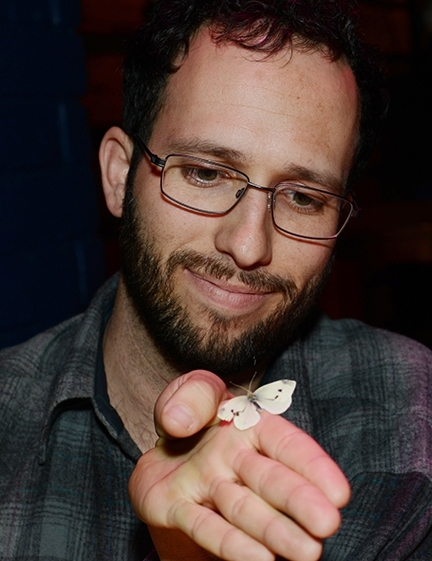
No rapae today!
That's the latest report from Art Shapiro, distinguished professor of evolution and ecology at the University of California, Davis.
He's sponsoring his annual Butterfly-for-a-Beer Contest and it's Day 13, Friday the 13th. The first person who collects the first (verified) cabbage white butterfly (Pieris rapae) of the year in the three-county area of Yolo, Solano and Sacramento wins a pitcher of beer or its equivalent.
Shapiro launched the contest in 1972 to draw attention to Pieris rapae and its first flight. The butterfly is emerging earlier and earlier as the regional climate has warmed, said Shapiro, who does long-term studies of butterfly life cycles and climate. "Such studies are especially important to help us understand biological responses to climate change. The cabbage white is now emerging a week or so earlier on average than it did 30 years ago here."
Shapiro traditionally wins his own contest, often finding his quarry near a railroad embankment in West Sacramento,Yolo County. He traveled there today and reported back:
"After a chilly morning, a sunny and seasonably mild (58 F) afternoon in West Sacramento with no wind in the lee of the railroad embankment. Brassica kaber, campestris and tournefortii and Raphanus are blooming, but not heavily yet. A lot of ponding and mud--one has to plod slowly and heavily to avoid slipping!...I stayed through the heat of the day, though I did not expect to find P. rapae out, and I didn't. No Leps (Lepidopterans) at all, and oddly no honey bees; just a variety of Diptera out and about. The outlook to the end of the month looks wet, wet, wet."
UC Davis ecology graduate student Jacob Montgomery won last year, catching a female cabbage white butterfly on Jan. 16 on his lavender plant just outside his front door in west Davis, Yolo County. Since 1972, the first flight has varied from Jan. 1 to Feb. 22, averaging about Jan. 20.
The professor, a fellow of the American Association for the Advancement of Science, the Royal Entomological Society and the California Academy of Sciences, monitors the butterfly population of Central California and maintains a butterfly website, where he records his research. He is the author of A Field Guide to Butterflies of the San Francisco Bay and Sacramento Valley Regions, published in 2007 by the University of California Press.
The cabbage white butterfly inhabits vacant lots, fields and gardens where its host plants, weedy mustards, grow. What does it look like? It's a white butterfly with black dots on the upperside (which may be faint or not visible in the early season). It inhabits vacant lots, fields and gardens where its host plants, weedy mustards, grow.
The contest rules include:
- It must be an adult (no caterpillars or pupae) and be captured outdoors.
- It must be brought in alive to the department office, 2320 Storer Hall, UC Davis, during work hours, 8 a.m. to 5 p.m., Monday through Friday, with the full data (exact time, date and location of the capture) and your name, address, phone number and/or e-mail. The receptionist will certify that it is alive and refrigerate it. (If you collect it on a weekend or holiday, keep it in a refrigerator; do not freeze. A few days in the fridge will not harm it.)
- Shapiro is the sole judge.
Shapiro, who is in the field more than 200 days of the year, usually returns to his Storer Hall office with the first cabbage white of the year. He has been defeated only four times since 1972. Three winners were his own graduate students: Adam Porter defeated him in 1983; and Sherri Graves and Rick VanBuskirk each won in the late 1990s.
So, no rapae, no beer. The search continues for the first cabbage white of 2017. Rapae on!
Attached Images:
